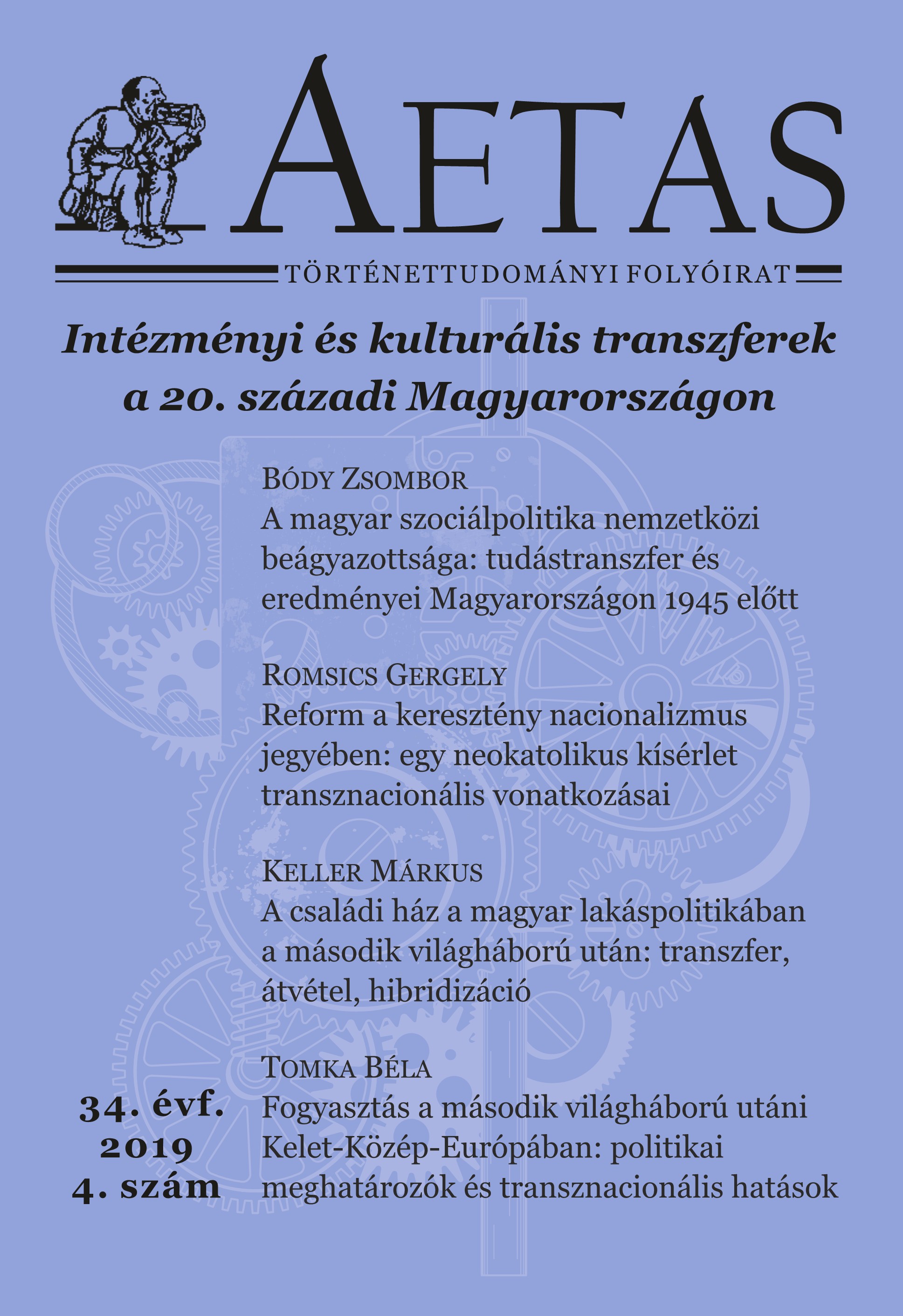A családi ház a magyar lakáspolitikában a második világháború után: transzfer, átvétel, hibridizáció
The Detached House in Hungarian Housing Policy After World War II: Transfer, Adoption, Hybridization
Author(s): Márkus KellerSubject(s): Post-War period (1950 - 1989)
Published by: AETAS Könyv- és Lapkiadó Egyesület
Summary/Abstract: The essay analyses the role of the detached house as a type of accommodation in the housing policy of post-war Hungary in comparison to Western Germany. Since it is a controversial type of housing in the discourse of architecture, the detached house is a suitable example for showing the aims and guidelines of the state in solving the resurfacing housing problems after WWII. It also allows us to explore how the international (primarily West German) examples in solving the housing issue were adopted and applied to Hungary by the new architectural and intellectual elite emerging in the years following the war. The Hungarian architectural elite, which was an important participant of the European architectural and housing discourse before and immediately after the Second World War, realized how pressing the housing situation was, and tried to modernize housing in Hungary by following Western models. These modern approaches however came in conflict with the housing traditions of the countryside. This was the main reason why the Hungarian architectural elite refused to accept the detached house as a form of mass housing and considered the prevalent desire to live in a detached house to be psychosis, not a reasonable need. At the turn of the 1950s and 60s housing became an important area of the search – by a contemporary expression – for the modern socialist lifestyle. Witnessing the popularity of the detached house the participants of this discourse considered whether this type of accommodation was compatible with the new, socialist social organization. This discourse clearly shows that the aversion towards the detached house adopted from modern architectural trends has been amended by a new argument, which attempted to stop the spread of this form of housing not because of economic or aesthetic reasons, but because it was deemed unfit for the new society. Therefore, the original idea transformed and got modified during the transfer.
Journal: AETAS - Történettudományi folyóirat
- Issue Year: 2019
- Issue No: 4
- Page Range: 49-61
- Page Count: 13
- Language: Hungarian

